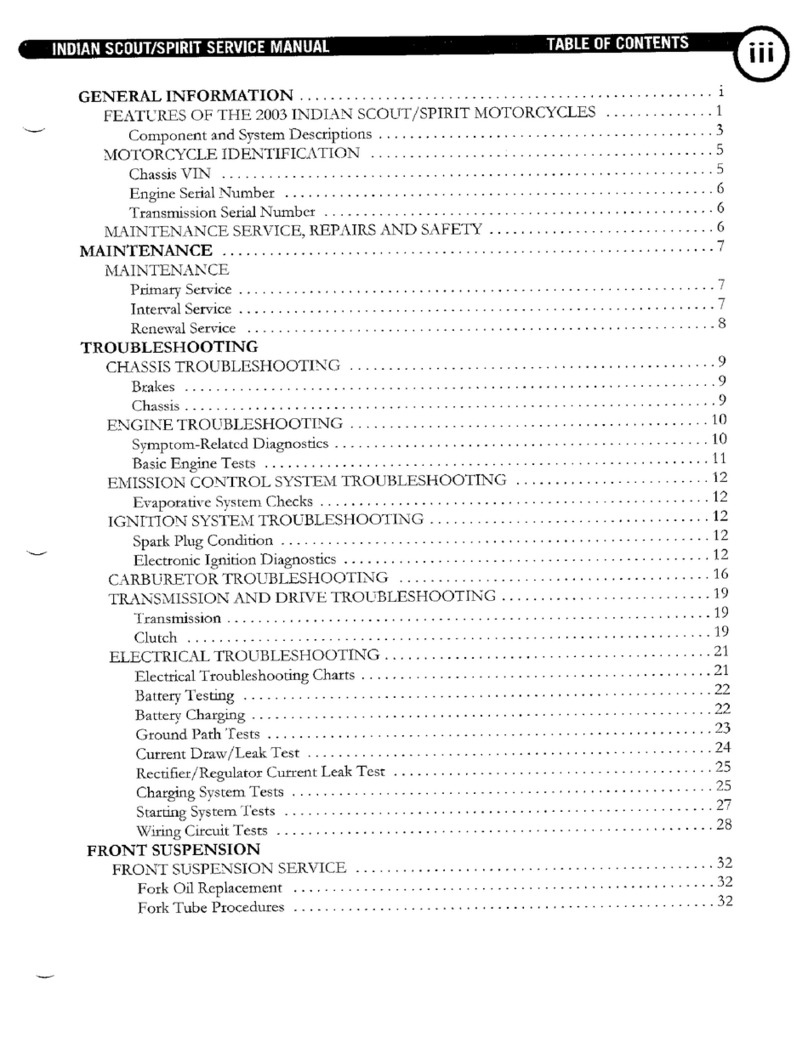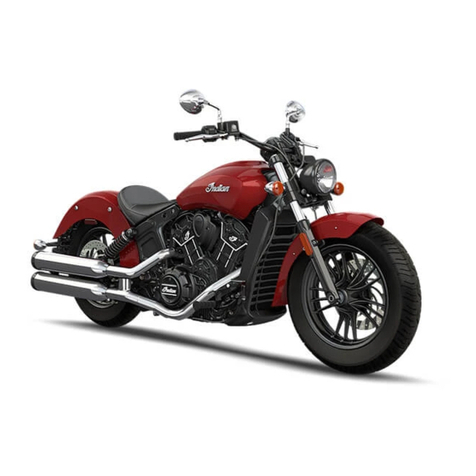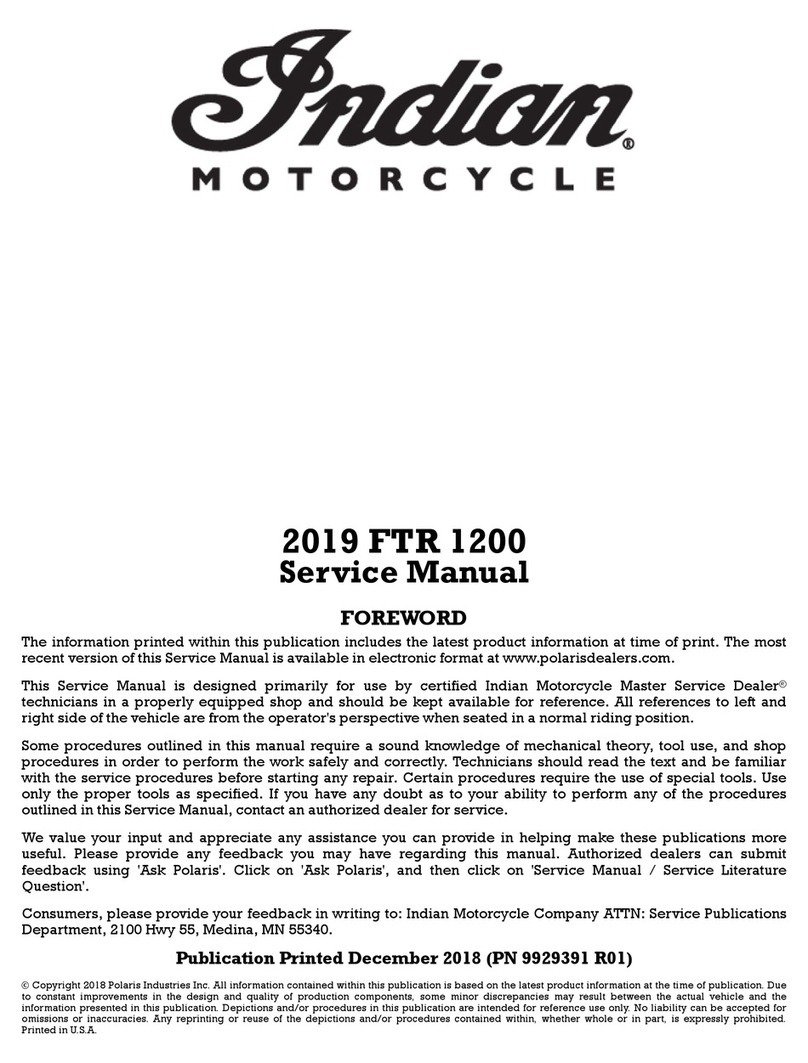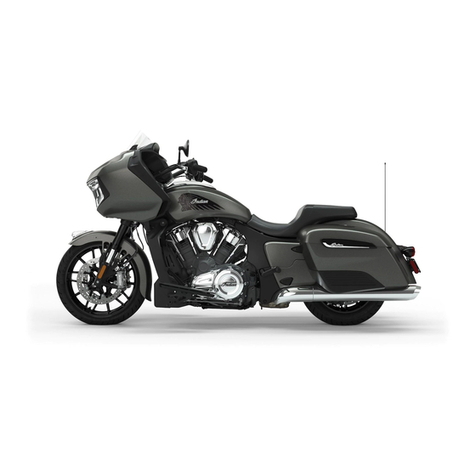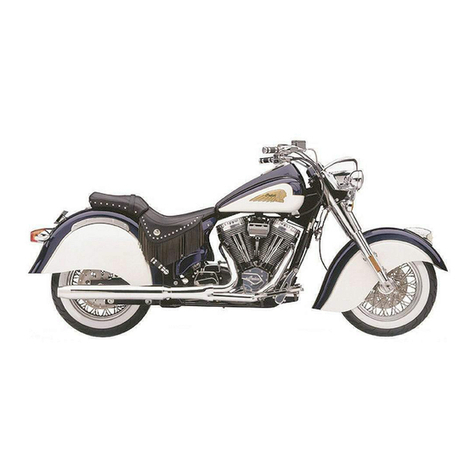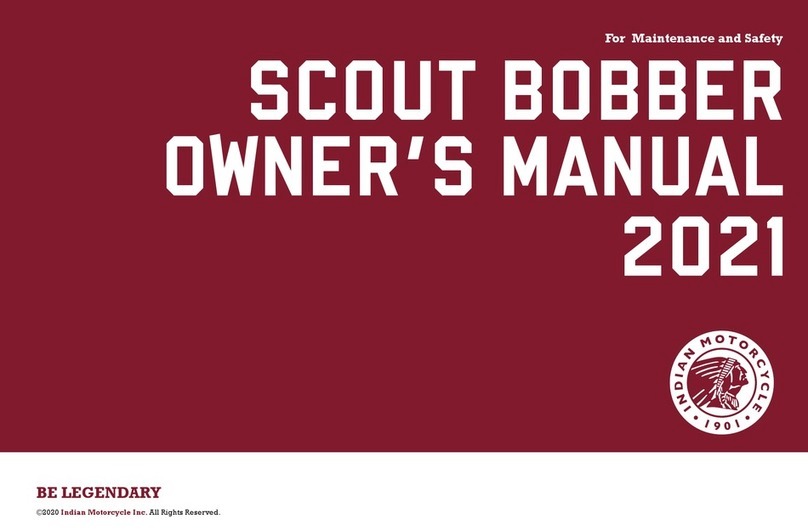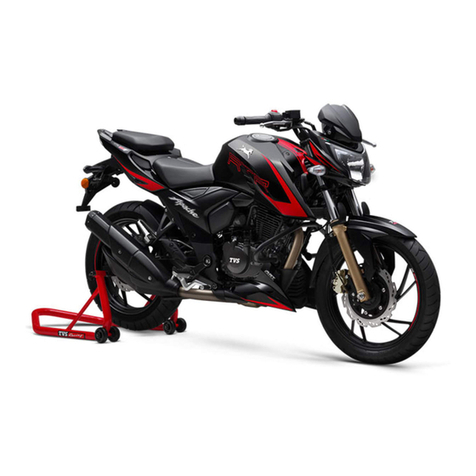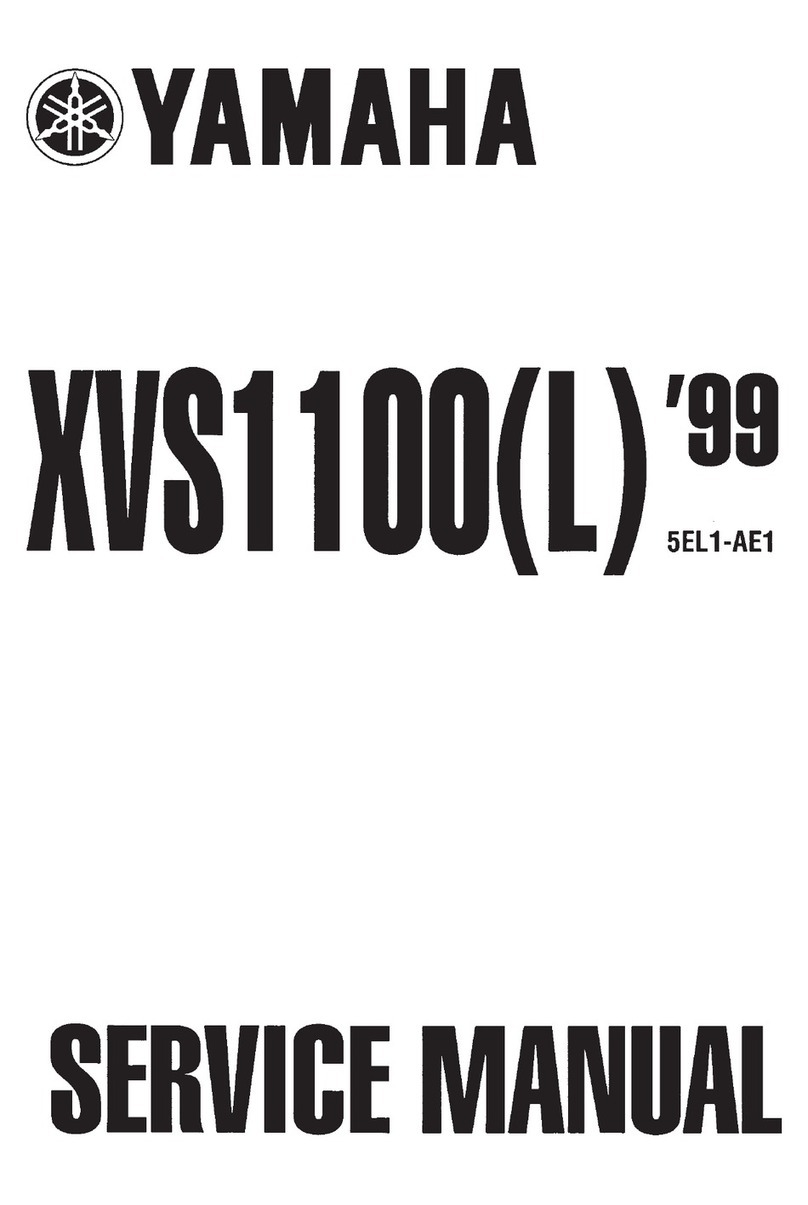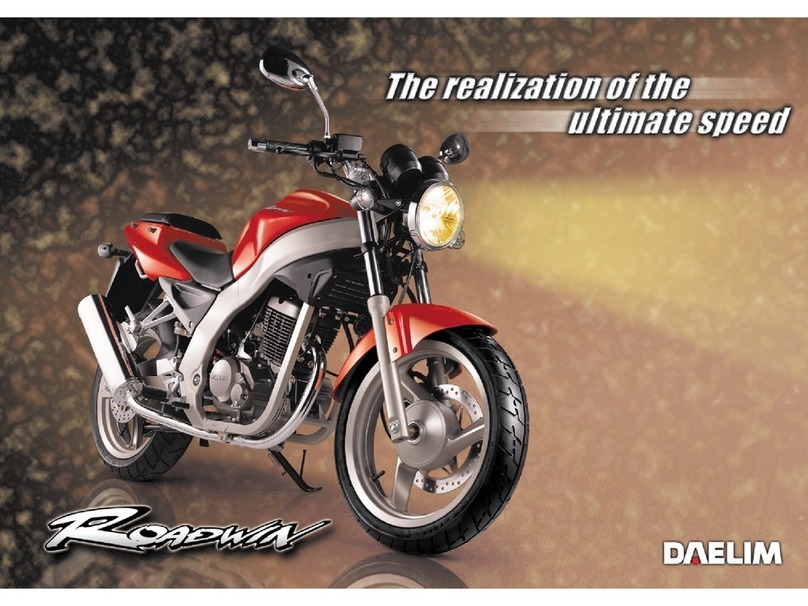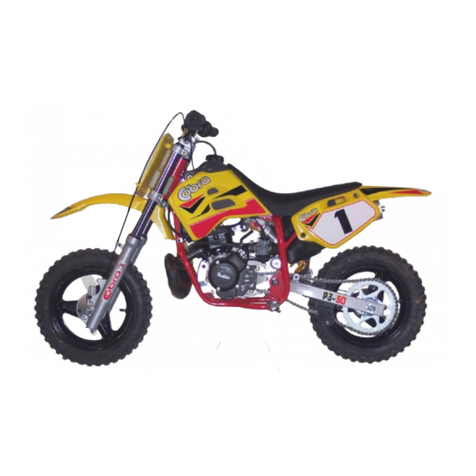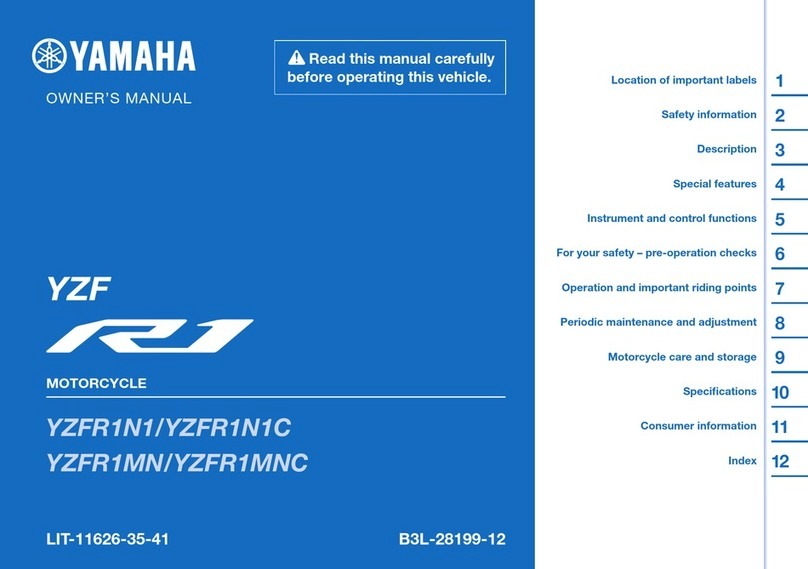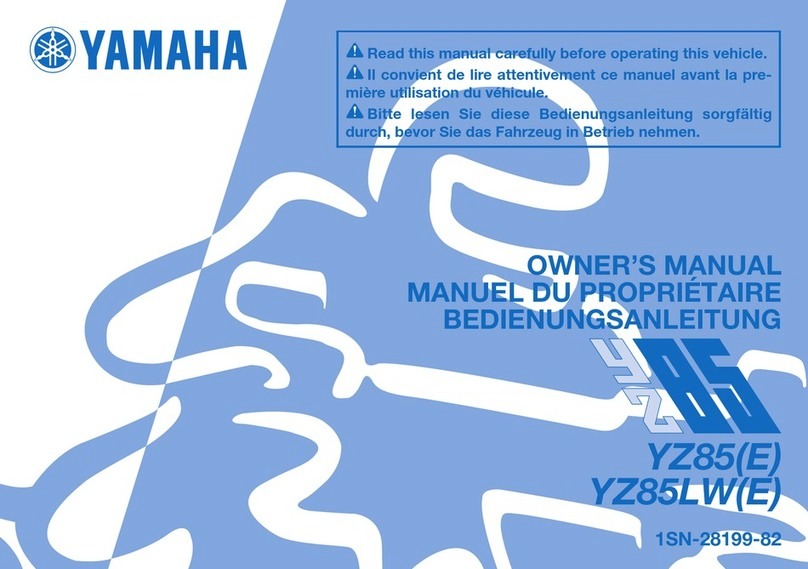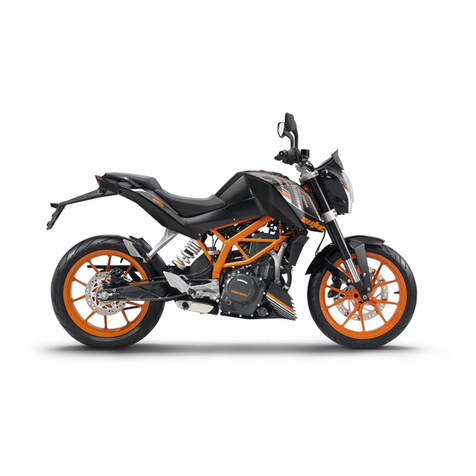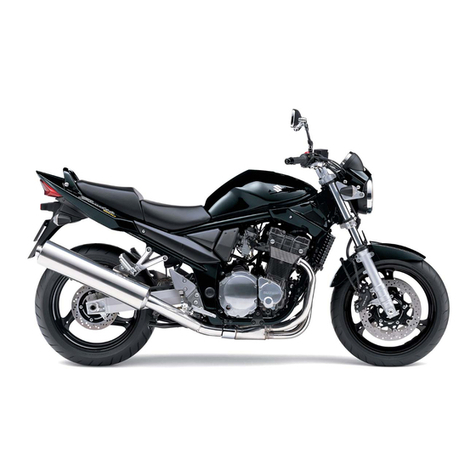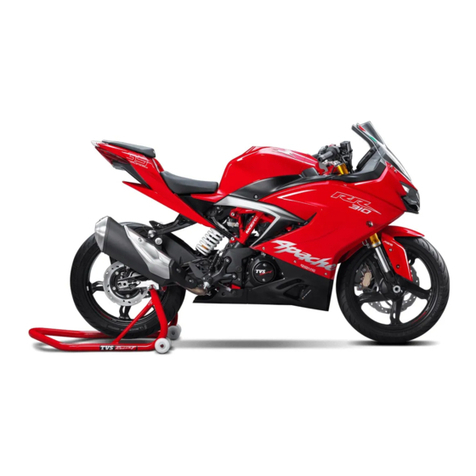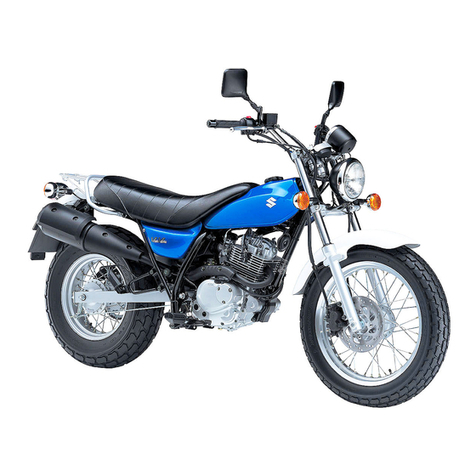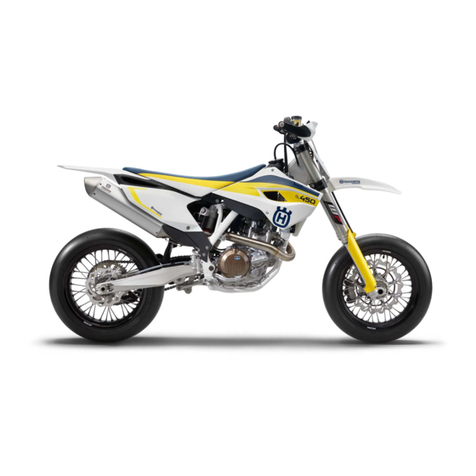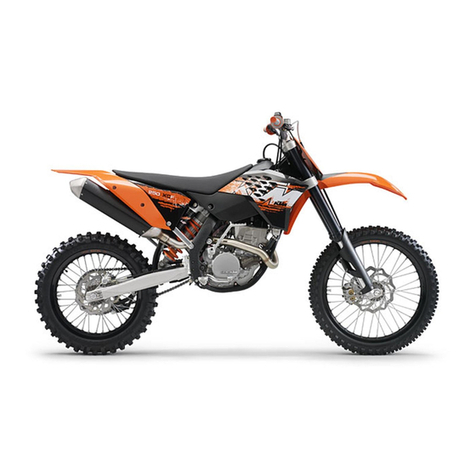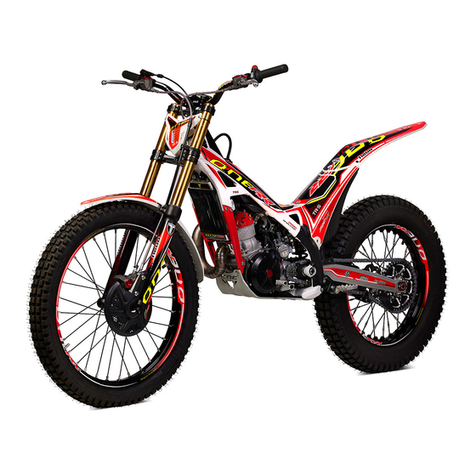
2
(&/&3"-*/'03."5*0/ */%*"/$)*&'7*/5"(&4&37*$&."/6"-
$PNQPOFOUBOE4ZTUFN
%FTDSJQUJPOT
$IBTTJT
Front suspension — The Chief Vintage is fitted with a
conventional-style front suspension with hydraulic
compression and rebound damping. Chief Vintage
models are equipped with the Paioli front suspension
components. The Paioli front suspension has the caliper-
mounting bracket as an integral part of the
left-front fork slider, unlike previous versions which
used a separate caliper mounting bracket.
The 41 mm upper fork tubes (stanchions) of the Paioli
assembly are hard chromed with fork sliders that are
forged EN-AW-6082 aluminum. The fork sliders are
finished with tri-plate chrome.
Steering — The rake of the front forks is 34 degrees.
This rake provides a front-wheel trail dimension of 5.92"
with the standard MT90-16 sized tires.
Rear suspension — The rear swingarm is suspended at
the top on a single KW rising-rate spring and shock
absorber that provides 4.25" of travel. Spring preload is
adjustable.
Brakes — Single-disc brakes are used on both the front
and rear wheels at the left and right sides respectively.
Both feature Brembo, differential bore, four-piston
calipers in combination with 11.5" rotors.
Wheels and tires —The wheels are chrome with
60 spokes and 16" x 3.5" rims. These are fitted with size
MT90-16 tires at both front and rear locations.
Frame — The substantial frame is constructed of high-
tensile steel and protected with a black powder-coated
finish. Fitted with the standard rear swingarm and front
suspension, the frame provides a wheelbase of 68.4".
&OHJOFBOE3FMBUFE4ZTUFNT
Basic engine —At the core of the motorcycle is its
engine. The Chief Vintage is powered by the Indian
POWERPLUSTM engine and is a four-cycle,
two-cylinder engine with a 45-degree V-configuration.
Its large bore and stroke give it a displacement of
100 cubic inches. The design is also traditional, carrying
forward the characteristic “round” cylinders found in
earlier Indian Chief motorcycles. At a compression ratio
of 9.2:1, the engine produces 78 foot-pounds of torque
at 3800 rpm and 67 hp at 4750 rpm.
Figure 3 — Indian POWERPLUS™ engine
The piston connecting rods are a fork-and-blade style
connected to a common crank pin joining two
flywheels. The crank pin is set between the pinion shaft
flywheel to the right and the sprocket shaft flywheel to
the left. The sprocket shaft drives the compensator
sprocket in the primary case at the left side of the
motorcycle. The sprocket shaft carries the alternator
rotor, between the engine crankcase and the
compensator. The pinion shaft drives the camshaft, oil
pump and breather valve through gearing at the right
side of the engine.
The camshaft actuates the intake and exhaust valves
through a valve train that includes roller lifters, pushrods
and rocker shaft assemblies. The roller lifters, following
the cam lobes, raise the pushrods and rocker arms to
open the intake and exhaust valves at the appropriate
times in the intake and exhaust cycles.
Lubrication system — The lubrication system
incorporates a gerotor-type oil pump located at the front
of the cam housing. The pump, which is driven by a
worm gear fitted on the pinion shaft, provides positive
lubrication to the engine. At the rear of the cam housing
is a full-flow, spin-on type filter to screen the lubricating
oil as it circulates through the system.
Fuel system —The fuel system includes dual tanks
with a total capacity of 5.5 gallons including the
1.2-gallon reserve. Fuel is gravity fed to a Mikuni HSR
carburetor mounted at the left side of the engine
between the cylinder heads. The carburetor features a
42 mm bore with a flat-slide throttle valve.
Ignition system —Combustion is controlled with a
computerized electronic ignition system. The system’s
electronic module and timing sensor controls output to
the spark plugs in the cylinders. The ignition rotor,
attached to the end of the pinion shaft, in combination
with the sensor in the ignition cover, provides the
“trigger” signal for the electronic ignition system.





















